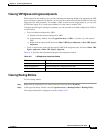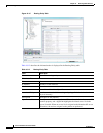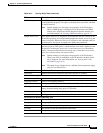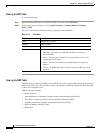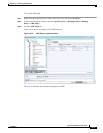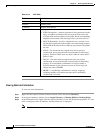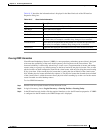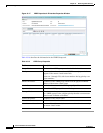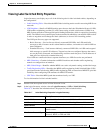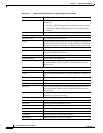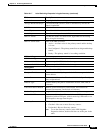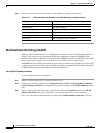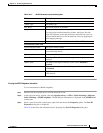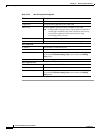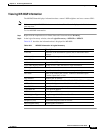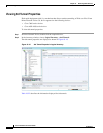
18-39
Cisco Prime Network 4.0 User Guide
OL-29343-01
Chapter 18 Monitoring MPLS Services
Monitoring MPLS Services
Viewing Label Switched Entity Properties
Logical inventory can display any or all of the following tabs for label switched entities, depending on
the configuration:
• Label Switching Table—Describes the MPLS label switching entries used for traversing MPLS core
networks.
• LDP Neighbors—Details all MPLS interface peers that use the Label Distribution Protocol (LDP).
LDP enables neighboring provider (P) or PE routers acting as label switch routers (LSRs) in an
MPLS-aware network to exchange label prefix binding information, which is required to forwarding
traffic. The LSRs discover potential peers in the network with which they can establish LDP sessions
in order to negotiate and exchange the labels (addresses) to be used for forwarding packets.
Two LDP peer discovery types are supported:
–
Basic discovery—Used to discover directly connected LDP LSRs. An LSR sends hello
messages to the all-routers-on-this-subnet multicast address, on interfaces for which LDP has
been configured.
–
Extended discovery—Used between indirectly connected LDP LSRs. An LSR sends targeted
hello messages to specific IP addresses. Targeted sessions are configured because the routers
are not physically connected, and broadcasting would not reach the peers. The IP addresses of
both peers are required for extended discovery.
If two LSRs are connected with two separate interfaces, two LDP discoveries are performed.
• MPLS Interfaces—Contains information on MPLS interfaces and whether traffic engineering
tunnels are configured on an interface.
• MPLS Label Range—Identifies whether MPLS uses static or dynamic routing, and the label range.
• Traffic Engineering LSPs—Describes the MPLS traffic engineering Label Switched Paths (LSPs)
provisioned on the switch entity. MPLS traffic engineering LSP, an extension to MPLS TE, provides
flexibility when configuring LSP attributes for MPLS TE tunnels.
• VRF Table—Describes MPLS paths that terminate locally at a VRF.
To view information for label switched entities:
Step 1 Double-click the required device in Prime Network Vision.
Step 2 In the logical inventory window, choose Logical Inventory > LSEs > Label Switching.
Table 18-17 describes the information that is displayed for label switched entities.
Table 18-17 Label Switching Properties in Logical Inventory
Field Description
Local LDP ID Local Label Distribution Protocol (LDP) identifier.
LDP Process State State of the LDP process, such as Running, Down, or Unknown.
MPLS Interfaces
ID Identifier for MPLS interface, as a combination of IP address and
interface name.
Distribution Protocol Type Distribution protocol used: Null, LDP, TDP (Tag Distribution
Protocol), RSVP, or TDP and LDP.



